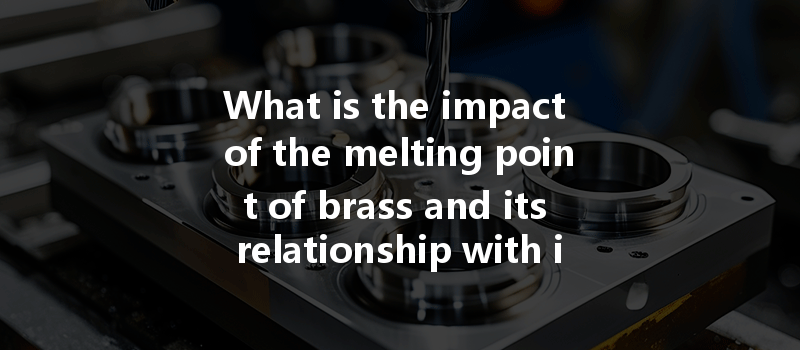: The Melting Point of Brass in Manufacturing
Did you know that the composition of brass can significantly impact its melting point, which in turn affects the CNC machining process? Accurate knowledge of the melting point of brass and its relationship with composition is crucial for manufacturers and engineers aiming to achieve precision and efficiency in CNC machining operations. This blog will explore the intricacies surrounding brass’s melting point, how it relates to its composition, and the implications for CNC machining.
What is Brass? Understanding its Composition
Brass is an alloy primarily composed of copper and zinc, but its properties can vary widely depending on the specific ratios of these materials and the inclusion of other elements such as lead, tin, or nickel. The typical compositions of brass can be categorized into two main types:
Understanding the composition of brass alloys is essential because it not only dictates their physical and mechanical properties but also their melting points. The melting point of brass varies significantly based on the proportions of copper and zinc, as well as any additional elements present.
Melting Point of Brass
The melting point of brass generally ranges from 900°C to 940°C (1652°F to 1724°F). However, different types of brass have varying melting points:
The Relationship Between Composition, Melting Point, and CNC Machining
When machining brass using CNC processes, several factors become critical, particularly the melting point and its relationship with composition. This section will delve into how these factors interrelate and impact machining.
During CNC machining, heat is generated due to friction and cutting forces. As the temperature approaches the alloy’s melting point, thermal expansion becomes significant. A well-understood relationship exists among:
If the melting point is low, the brass may begin to soften or even melt during machining, leading to inaccuracies and defects in the workpiece. Since different brass compositions have different melting points, CNC operators must select the right cutting parameters to maintain a safe distance from the melting point for the specific brass alloy being machined.
The composition of brass affects its hardness and machinability, which directly influence tool wear.
Choosing the correct tool material—such as carbide or high-speed steel—based on the melting point and composition of the brass will help improve tool life and ensure higher quality cuts.
The ability of CNC machining to produce high-quality surfaces depends greatly on the material’s melting point and its behavior under heat.

Manufacturers can optimize their processes by understanding the relationship between the brass’s melting point, its composition, and the machinery used. For instance, utilizing coolant effectively can dissipate heat and maintain a stable temperature during machining.
Best Practices for CNC Machining of Brass
Now that we understand the importance of the melting point and its relationship to brass composition, let’s explore best practices that can enhance the CNC machining process:
Before machining, it is crucial to identify the composition and type of brass you will be working with. Whether it is alpha or beta brass, the knowledge will help in determining the appropriate melting point, hardness, and machinability characteristics.
Adjust the cutting speed, feed rate, and depth of cut based on the specific brass composition and known melting point.
Continuous assessments and adjustments based on the observed performance during machining leads to great outcomes.
Utilizing the right type of coolant can prevent thermal expansion and decrease the risk of premature melting of the workpiece. It also helps maintain tool temperature, extending tool life and maintaining quality.
Monitoring the tools regularly for wear and tear is critical, particularly when working with abrasive brass materials.
: Why Understanding the Melting Point is Crucial for CNC Machining
In this blog, we have explored the relationship between the melting point of brass and its composition, uncovering why this knowledge is vital for successful CNC machining processes.
Key techniques discussed include:
Brass is a compelling material in manufacturing due to its favorable properties, but understanding how its melting point changes with composition can significantly enhance precision and efficiency in CNC machining processes.
As you consider your next CNC machining project involving brass, remember these insights and techniques. They are not just practical guidelines but essential knowledge that can drive your manufacturing operations towards excellence. Awareness of the melting point of brass and its implications empowers manufacturers like you to make informed decisions, thus ensuring quality and minimizing costs in the long run.
Ultimately, the quest for error-free and high-quality manufacturing is ongoing, and armed with the knowledge of brass melting points and compositions, you’re one step closer to achieving that goal.






